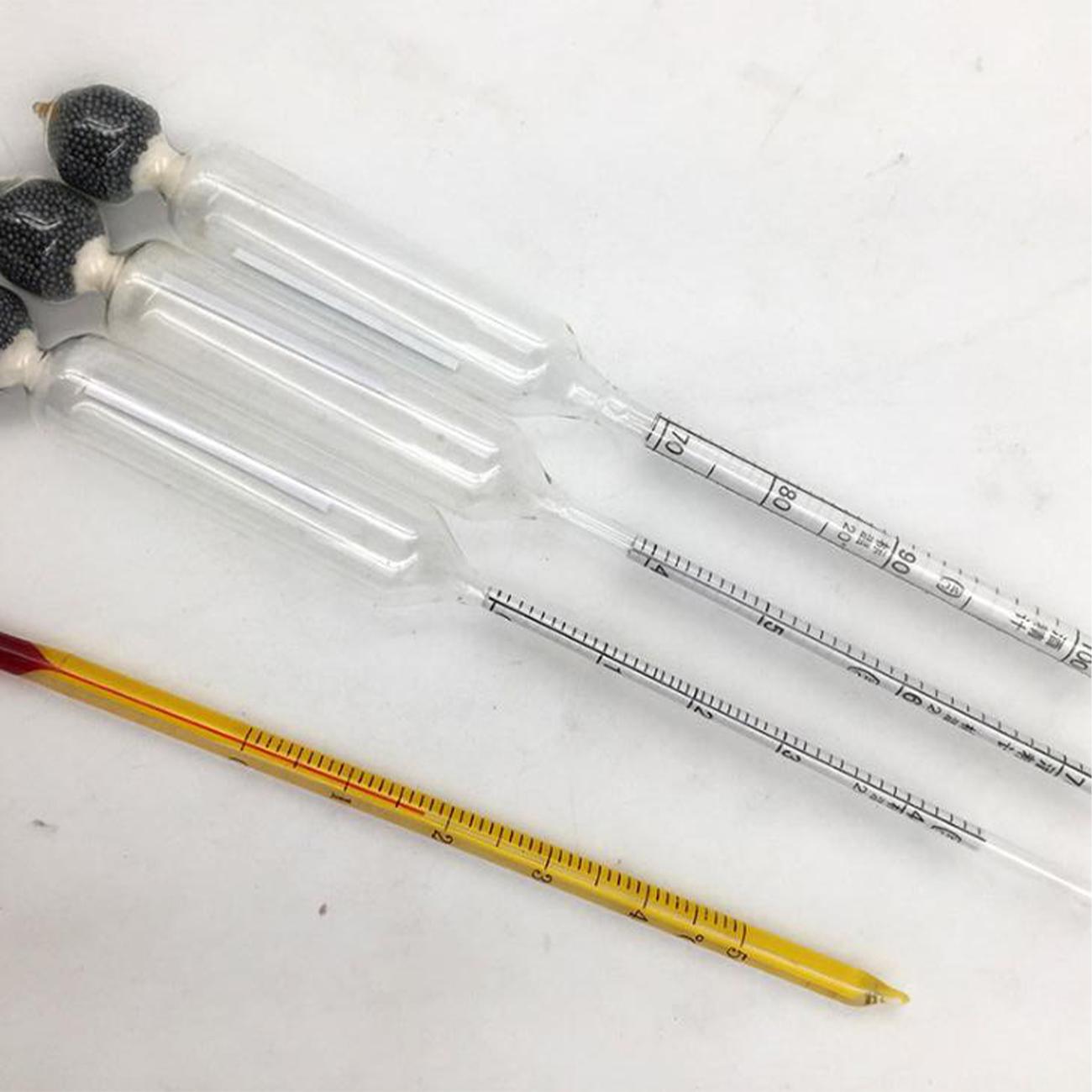

Because the density of a liquid changes with temperature, hydrometers are calibrated for different reference and sample temperatures. Specific gravity is the ratio of the mass of a liquid to the mass of an equal volume of pure water. Also, see the temperature conversion table below. A hydrometer is a tool scientists use to measure the specific gravity of liquids. Follow the instructions that came with your tool to adjust your readings. If the temperature on your thermometer is 65 F and your gravity reading is 1.210, adjust your reading to 1.206. For example, if the temperature on your thermometer is 93 F and your gravity reading is 1.210, adjust your reading to 1.214. A hydrometer is made with a calibrated glass tube. Add or subtract four points (.004) to your reading for every 10 F (6 C) registered above or below 80 F (27 C). A hydrometer is a tool used to measure the density or specific gravity of a liquid when compared to water. (Prepared by the National Bueau 01 Btsndarb end based on Inlormation published In Bulletln of the B-u of Btendarda, Vol. Use the conversion table on your tool to adjust your reading. ANY INDICATION OF THE HYDROMETER AT TEMPERATURES BETWEEN 0' AND 100' F. Get the temperature from the thermometer.If you have a ball-or needle-type-hydrometer, follow the instructions on your tool's package for the reading. Jot down your reading on a piece of paper. To read the electrolyte specific gravity, read the number on the float's scale that intersects the surface level of the electrolyte.Maintain the hydrometer in a vertical position, and raise it to eye level.Make sure to pull enough of the liquid so the float in the hydrometer reaches around the center of the container and moves freely. Draw electrolyte into the hydrometer once more, starting with the first cell on either side of the battery.Likewise, subtract that amount if the temperature is below the calibration temperature. Repeat this four or five times to get the thermometer up to speed with the electrolyte temperature. In this case, my suggestion is to add 0.00035 to the hydrometer reading for every 1C (or 0.00019 per 1F) by which the measurement temperature exceeds the calibration temperature, to get a corrected specific gravity. Allow the liquid to sit inside the glass tube for a few seconds, and then release it back into the battery.

Consult with a battery shop, if you need more information. If the electrolyte has a grayish tint, either a cell has degraded, or your battery has reached the end of its service life. You should be able to see through the colorless liquid. Release the bulb and let some electrolyte enter the hydrometer container.Remove the caps from the battery top, squeeze the hydrometer rubber bulb and submerge the tip into the electrolyte.Put on your acid-resistant gloves and goggles. Be sure to check and see what your hydrometer is calibrated for, while most hydrometers are calibrated to be accurate at 68 degrees (F) / 20 degrees (C) not all of them are.Never turn or alter the screw on the back of the dial. To safely clean the dial, simply wipe the face with a clean, damp cloth. Never submerge the face of your Murphy Dial in liquid nor expose it to excessive steam/moisture for extended periods of time. If your syrup sample’s temperature changes, so will the reading on the Murphy dial, giving you the real-time feedback you need to take a quick and accurate measurement. The dial on the Murphy Compensation Cup will indicate the actual location of 66.9✫RIX on your hydrometer based on your syrup sample’s current temperature. Type in your hydrometer reading and temperature and the calibration temperature to. The Murphy Compensation Cup does all those calculations for you so you NEVER have to even think about it again. Calculate the Hydrometer Reading Correction relative to a Temperature. Traditionally, the only way to get an accurate hydrometer reading was to measure your syrup sample’s temperature and then use a compensation chart to calculate where the hydrometer should actually be floating. Temperature of your syrup can drastically affect the buoyancy of your hydrometer.


 0 kommentar(er)
0 kommentar(er)
